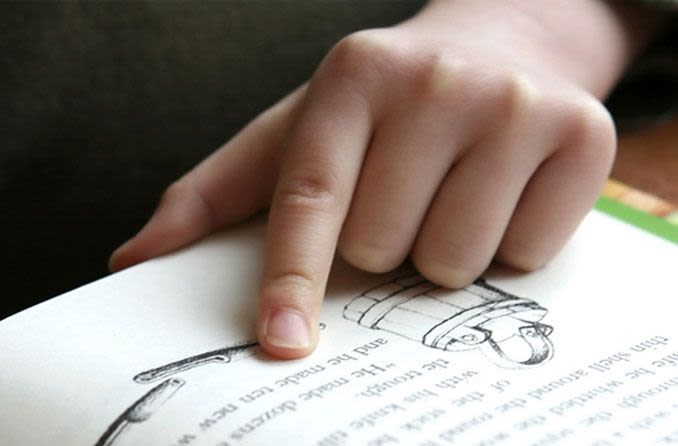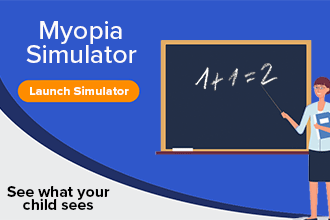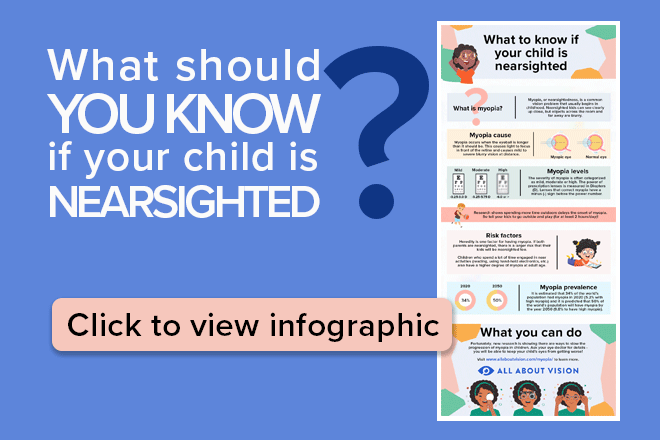Are learning-related vision issues holding your child back?

Vision and learning are intimately related. In fact, experts say that roughly 80 percent of what a child learns in school is information that is presented visually. So good vision is essential for students of all ages to reach their full academic potential.
When children have difficulty in school — from learning to read to understanding fractions to seeing the blackboard — many parents and teachers believe these kids have vision problems.
And sometimes, they're right. Eyeglasses or contact lenses often help children better see the board in the front of the classroom and the books on their desks.
Ruling out simple refractive errors is the first step in making sure your child is visually ready for school. But nearsightedness, farsightedness and astigmatism are not the only visual disorders that can make learning more difficult.
Less obvious vision problems related to the way the eyes function and how the brain processes visual information also can limit your child's ability to learn.
Any vision problems that have the potential to affect academic and reading performance are considered learning-related vision problems.
Vision And Learning Disabilities
Learning-related vision problems are not learning disabilities. The U.S. Individuals with Disabilities Education Act (IDEA)* defines a specific learning disability as: ". . . a disorder in one or more of the basic psychological processes involved in understanding or in using language, spoken or written, that may manifest itself in an imperfect ability to listen, think, speak, read, write, spell, or do mathematical calculations, including conditions such as perceptual disabilities, brain injury, minimal brain dysfunction, dyslexia, and developmental aphasia."
IDEA also says learning disabilities do not include learning problems that are primarily due to visual, hearing or motor disabilities. Intellectual disability and emotional disturbances also are excluded as learning disabilities, along with learning problems related to environmental, cultural or economic disadvantage.
But specific vision problems can contribute to learning problems, whether or not a child has been diagnosed as "learning disabled." In other words, a child struggling in school may have a specific learning disability, a learning-related vision problem, or both.
If you are concerned about your child's performance in school, you need to find out the underlying cause (or causes) of the problem. The best way to do this is through a team approach that may include the child's teachers, the school psychologist, an eye doctor who specializes in children's vision and learning-related vision problems and perhaps other professionals.
Identifying all contributing causes of the learning problem increases the chances that the problem can be successfully treated.
Types Of Learning-Related Vision Problems
Vision is a complex process that involves not only the eyes but the brain as well. Specific learning-related vision problems can be classified as one of three types. The first two types primarily affect visual input. The third primarily affects visual processing and integration.

If your child habitually places her head close to her book when reading, she may have a vision problem that can affect her ability to learn.

Learning problems can lead to depression and low self-esteem. Seeing an eye doctor should be one of your first steps.
Eye health and refractive problems. These problems can affect the visual acuity in each eye as measured by an eye chart. Refractive errors include nearsightedness, farsightedness and astigmatism, but also include more subtle optical errors called higher-order aberrations. Eye health problems can cause low vision — permanently decreased visual acuity that cannot be corrected by conventional eyeglasses, contact lenses or refractive surgery.
Functional vision problems. Functional vision refers to a variety of specific functions of the eye and the neurological control of these functions, such as eye teaming (binocularity), fine eye movements (important for efficient reading), and accommodation (focusing amplitude, accuracy and flexibility). Deficits of functional visual skills can cause blurred or double vision, eye strain and headaches that can affect learning. Convergence insufficiency is a specific type of functional vision problem that affects the ability of the two eyes to stay accurately and comfortably aligned during reading.
Perceptual vision problems. Visual perception includes understanding what you see, identifying it, judging its importance and relating it to previously stored information in the brain. This means, for example, recognizing words that you have seen previously, and using the eyes and brain to form a mental picture of the words you see.
Most routine eye exams evaluate only the first of these categories of vision problems — those related to eye health and refractive errors. However, many optometrists who specialize in children's vision problems and vision therapy offer exams to evaluate functional vision problems and perceptual vision problems that may affect learning.
Color blindness, though typically not considered a learning-related vision problem, may cause problems in school for young children if color-matching or identifying specific colors is required in classroom activities. For this reason, all children should have an eye exam that includes a color blind test prior to starting school.
Symptoms Of Learning-Related Vision Problems
Symptoms of learning-related vision problems include:
Headaches or eye strain
Blurred vision or double vision
Crossed eyes or eyes that appear to move independently of each other (Read more about strabismus.)
Dislike or avoidance of reading and close work
Short attention span during visual tasks
Turning or tilting the head to use one eye only, or closing or covering one eye
Placing the head very close to the book or desk when reading or writing
Excessive blinking or rubbing the eyes
Losing place while reading, or using a finger as a guide
Slow reading speed or poor reading comprehension
Difficulty remembering what was read
Omitting or repeating words, or confusing similar words
Persistent reversal of words or letters (after second grade)
Difficulty remembering, identifying or reproducing shapes
Poor eye-hand coordination
Evidence of developmental immaturity
If your child shows one or more of these symptoms and is experiencing learning problems, it's possible he or she may have a learning-related vision problem.
To determine if such a problem exists, see an eye doctor who specializes in children's vision and learning-related vision problems for a comprehensive evaluation.
If no vision problem is detected, it's possible your child's symptoms are caused by a non-visual dysfunction, such as dyslexia or a learning disability. See an educational specialist for an evaluation to rule out these problems.
Signs Of Attention And Developmental Disorders
Many people know attention disorders by the names attention deficit disorder (ADD) or attention deficit/hyperactivity disorder (ADHD). Children with these conditions frequently are prescribed drugs like Ritalin. Occasionally, children with attention disorders experience other problems that contribute to inattentiveness, such as a speech and language dysfunction or nonverbal disorder. Consult a pediatric neurologist for a definitive diagnosis.
Parents can easily identify the three components of the autism spectrum disorder: lack of eye contact, inability to relate socially or inappropriate social interaction, and unusual repetitive interests that exclude other activities. Any or all of these early signs should prompt a consultation with your family doctor or pediatrician.
READ MORE: Vision problems can be misdiagnosed as ADHD or ADD
Treatment Of Learning-Related Vision Problems
If your child is diagnosed with a learning-related vision problem, treatment generally consists of an individualized and doctor-supervised program of vision therapy. Special eyeglasses also may be prescribed for either full-time wear or for specific tasks such as reading.
If your child is also receiving special education or other special services for a learning disability, ask the eye doctor who is supervising your child's vision therapy to contact your child's teacher and other professionals involved in his or her Individualized Education Program (IEP) or other remedial activities.
In some cases, vision therapy and remedial learning activities can be combined, and a cooperative effort to address your child's learning problems may be the best approach.
Also, keep in mind that children with learning difficulties may experience emotional problems as well, such as anxiety, depression and low self-esteem.
Reassure your child that learning problems and learning-related vision problems say nothing about a person's intelligence. Many children with learning difficulties have above-average IQs and simply process information differently than their peers.
*34 Code of Federal Regulations §300.7(c)(10)
Page published on Wednesday, February 27, 2019








